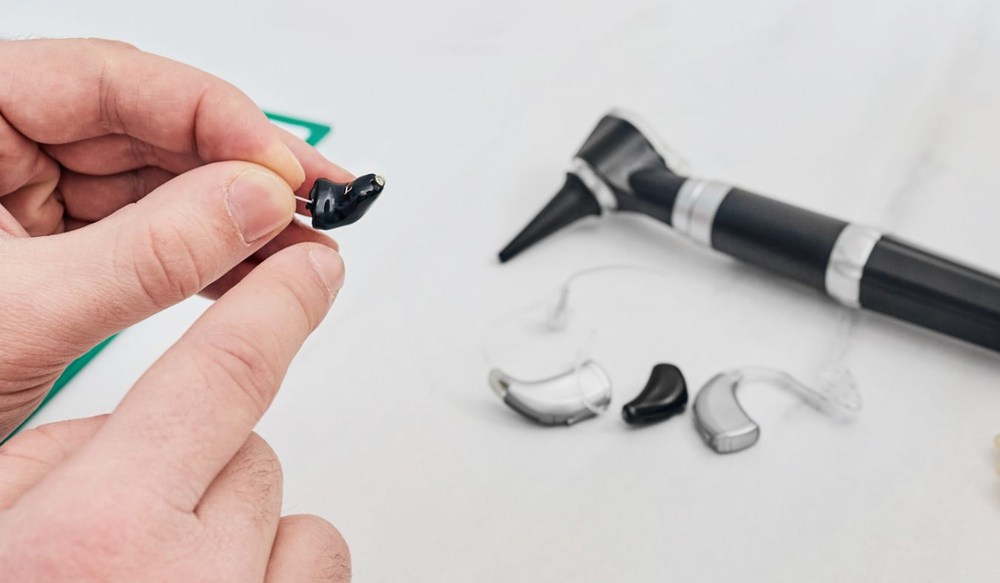How to Prepare for a Hearing Aid Fitting Appointment
A hearing aid fitting appointment is an important step in your hearing

By: admin | January 26, 2025
Winter brings its own set of challenges when you wear hearing aids. As temperatures drop and cold season arrives, you might notice your hearing aids acting differently. From dealing with temperature changes as you move between heated buildings and the cold outdoors, to managing your devices when you’re congested or fighting a winter cold – these situations can affect how well your hearing aids work.
For many of us, winter also means more indoor gatherings, holiday celebrations and family events where good hearing is especially important. The last thing you want is for your hearing aids to underperform when you’re trying to join in conversations or spend quality time with others.
But don’t worry – with some simple preparation and care, you can keep your hearing aids working well throughout the winter months. Whether you’re new to hearing aids or have worn them for years, understanding how to protect and maintain them during cold and flu season will help you stay connected and hearing clearly, no matter what winter throws your way.
Hearing aids are designed to amplify sound in a way that meets the unique needs of your hearing. These devices work by capturing sound from your environment, processing it and delivering it to your ears in a way that makes it easier to hear and understand. The process starts with tiny microphones that pick up sound waves around you. These microphones are incredibly sensitive, detecting a range of sounds from soft whispers to louder noises. Once the sound is captured, it’s sent to a digital processor that begins the process of adjusting the sound to match your hearing loss profile.
Inside the digital processor, the sound is converted into a digital signal, allowing the device to filter and amplify it in ways tailored to your hearing needs. For example, if you struggle to hear higher-pitched sounds like birds chirping or certain speech tones, the processor will enhance those frequencies specifically. Many modern hearing aids are also equipped with advanced features like noise reduction and directionality, which help distinguish important sounds, like someone speaking to you, from background noise. This ensures you can focus on what matters most, whether you’re in a quiet setting or a crowded space.
Once processed, the sound is converted back into an audible signal by the receiver, or small speaker, inside the hearing aid. This amplified sound is then delivered directly into your ear, helping you hear more clearly. Different styles of hearing aids achieve this in various ways – some sit entirely in your ear, while others rest behind the ear with a tube or mold to channel the sound. Regardless of the style, the goal remains the same: to give you access to sounds you may have been missing, restoring a sense of ease and confidence in everyday listening situations.
Cold weather presents unique challenges for hearing aids, affecting both their external components and internal functionality. One of the primary concerns is the impact of low temperatures on the materials used in the device. Prolonged exposure to cold can make the casing of your hearing aids brittle, increasing the risk of cracks or other damage. Additionally, condensation can form when moving from cold outdoor temperatures to a warmer indoor environment. This moisture can seep into the device and interfere with its delicate electronics, potentially causing malfunctions or reducing sound quality.
Battery performance is another critical issue in cold weather. Hearing aids often use zinc-air batteries, which rely on oxygen to function properly. Cold temperatures slow down the chemical reactions inside these batteries, leading to quicker depletion or temporary loss of power. Rechargeable batteries are also affected by the cold, as lithium-ion technology is sensitive to low temperatures, reducing the amount of charge the battery can hold. This means you might need to replace or recharge your batteries more frequently during the winter months, and proper storage is essential to prevent unnecessary wear.
Moisture-related issues are heightened in cold weather as well. Snow, sleet and even perspiration from wearing hats or earmuffs can introduce water into your hearing aids, potentially causing corrosion or short-circuiting the internal components. Wind and temperature shifts can also create challenges for directional microphones, making it harder for your hearing aids to process sound effectively.
One of the most noticeable signs of a malfunction is distorted or unclear sound. If voices or environmental noises sound muffled, crackly or overly sharp, it may indicate a problem with the microphone, speaker or internal circuitry. Similarly, if you experience intermittent sound or frequent cutting out, this could point to a loose component or battery issue.
Another common indicator is feedback or whistling noises, which occur when sound escapes from the hearing aid and loops back into the microphone. While some feedback is normal when inserting or adjusting the device, persistent or sudden occurrences may suggest issues with the fit, tubing or internal feedback suppression systems. Additionally, if your hearing aids are no longer responsive to adjustments, such as volume or program settings, this could indicate a software or button malfunction.
Physical changes can also signal a problem. For example, visible cracks, discoloration or damage to the casing can compromise the hearing aid’s performance, especially if moisture or debris enters the device. If your hearing aids feel unusually warm or fail to turn on despite replacing or recharging the batteries, internal electrical components might be at fault.
Winter weather can be harsh on hearing aids, but with proper care, you can protect them from the challenges of cold temperatures, moisture and exposure to the elements. A key step is to invest in protective accessories such as hearing aid covers or sleeves. These accessories create a barrier against snow, rain and sweat while still allowing sound to pass through. If you’re heading outdoors, wearing a hat or earmuffs not only keeps you warm but also shields your hearing aids from direct exposure to wind and precipitation.
Moisture is a common issue during winter due to condensation when transitioning between cold outdoor air and warm indoor environments. To combat this, use a hearing aid dehumidifier or drying box each night. These devices remove trapped moisture and help prevent corrosion or internal damage. It’s also wise to carry a small cleaning kit to remove snow, dust or debris that may accumulate throughout the day. Additionally, store your hearing aids in a warm, dry location when not in use, as extreme cold can damage the casing and internal components.
Battery care is also critical during winter months. Keep spare batteries with you, as the cold can drain them faster. If possible, store your batteries at room temperature rather than exposing them to cold conditions. For rechargeable hearing aids, ensure they are fully charged before venturing out and avoid leaving them in cold cars or unheated spaces. By taking these precautions, you can keep your hearing aids functioning optimally and ensure they continue to support you throughout the winter season.
Cold and flu season can have a surprising impact on your hearing, often making it temporarily more difficult to hear clearly. When you catch a cold or the flu, nasal congestion and sinus pressure can build up, leading to a condition called conductive hearing loss. This occurs when fluid accumulates in the middle ear, obstructing the transmission of sound to the inner ear. Symptoms may include muffled hearing, difficulty distinguishing speech in noisy environments or a sensation of fullness in the ears. Though this type of hearing loss is usually temporary, it can be frustrating while it lasts.
In some cases, illnesses like the flu can also lead to inflammation or infections in the ear, such as otitis media (middle ear infection). These infections can cause pain, hearing difficulties, and, in severe cases, even damage to the eardrum. High fevers associated with the flu may also temporarily affect auditory perception, making sounds seem distorted or less clear. Additionally, for individuals who already use hearing aids, colds and flu can exacerbate issues like earwax buildup or moisture accumulation in the ear, potentially interfering with the device’s performance.
Winter weather and illnesses like colds or the flu can create unique challenges for hearing aid users. While some issues can be managed at home, others require the expertise of an audiologist. If your hearing aids are cutting out, producing distorted sound or not turning on despite replacing or recharging the batteries, it’s time to seek professional help. Cold temperatures can affect the electronics and batteries in hearing aids, and an audiologist can diagnose and repair any weather-related damage to the devices.
Colds and flu can also impact your hearing aids by causing increased earwax buildup or making them feel less comfortable. If your hearing feels muffled or your hearing aids don’t seem to be performing as well as they should, an audiologist can examine the devices and clean or adjust them as necessary. They may also recommend additional accessories or maintenance steps to help protect your hearing aids during the winter months. Regular professional checks can ensure your devices continue to work effectively, no matter the season.
Winter may bring challenges, but it doesn’t have to interfere with your hearing or your ability to enjoy the season. By taking steps to care for your hearing aids and addressing any seasonal issues early, you can ensure they perform reliably, whether you’re navigating cold weather or managing the effects of a winter cold. Staying proactive about maintenance and knowing when to seek professional help will keep your hearing aids in top shape.
With the right approach, you can focus on what matters most during the winter months – cherishing time with loved ones, enjoying the festivities and fully engaging in the moments that make this season special.
There may be instances when professional advice or assistance becomes necessary. Whether you’re experiencing persistent issues with your hearing aids or need guidance in managing them during this season, don’t hesitate to reach out to the professionals at Memphis Audiology in Collierville, TN. You can schedule an appointment and talk to one of our team members by calling 901-708 -2916.
So as the cold and flu season approaches, take control by being proactive about caring for your hearing aids. Your diligence today will ensure optimal performance from these essential devices throughout the challenging season ahead.
Tags: hearing aid basics, hearing aid repair, hearing aid styles

A hearing aid fitting appointment is an important step in your hearing
By: admin | November 18, 2025

When someone close to you begins to experience hearing loss, it is natural
By: admin | September 24, 2025

Travel takes you to new places, exciting experiences and unexpected
By: admin | May 23, 2025
